San Francisco
Mission Dolores Park
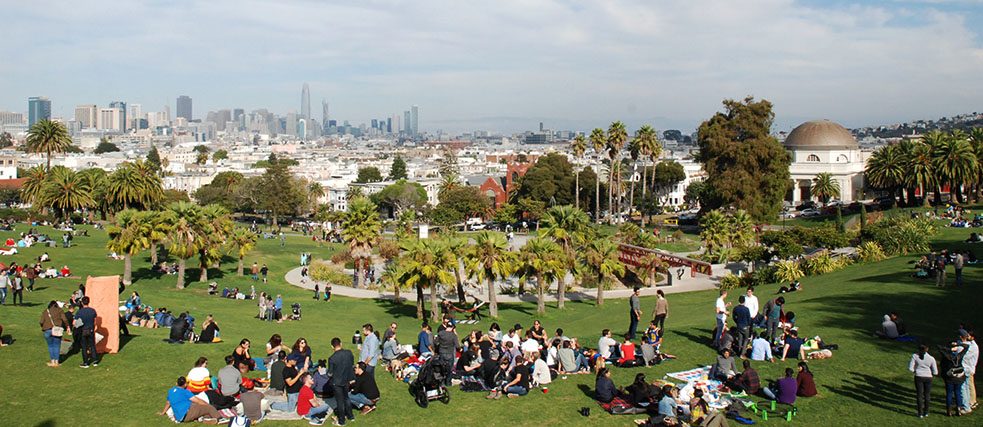
Painted entirely in gold, the Golden Fire Hydrant in San Francisco stands on the corner of 20th/Church Street – and is frequently overlooked despite being anything but inconspicuous: Mission Dolores Park just opposite steals the show from this city landmark, as the panoramic view it affords over the roofs of the city to San Francisco Bay is simply too beautiful.
Some people claim that the sun shines more often over Dolores Park than in other parts of the city. Whether this is merely perception or a reality, it is a fact that the park has been enjoying ever-increasing popularity since it reopened after a major renovation in 2012. In today’s era of travel blogs and TripAdvisor, even the best-kept secrets in cities such as San Francisco are not really secret any longer. And yet somehow visitors nonetheless gain the impression here that they have managed to escape the hordes of tourists at Fisherman’s Wharf. From there, it is a four-mile slog uphill to this green oasis in the heart of Mission District. Most get as far as the Painted Ladies – roughly halfway up – take a few snaps and then turn back again. It is well worth trudging all the way up to Dolores Park, however, and not only because of the view. Up here, you also get a good sense of everyday life in this historic quarter.
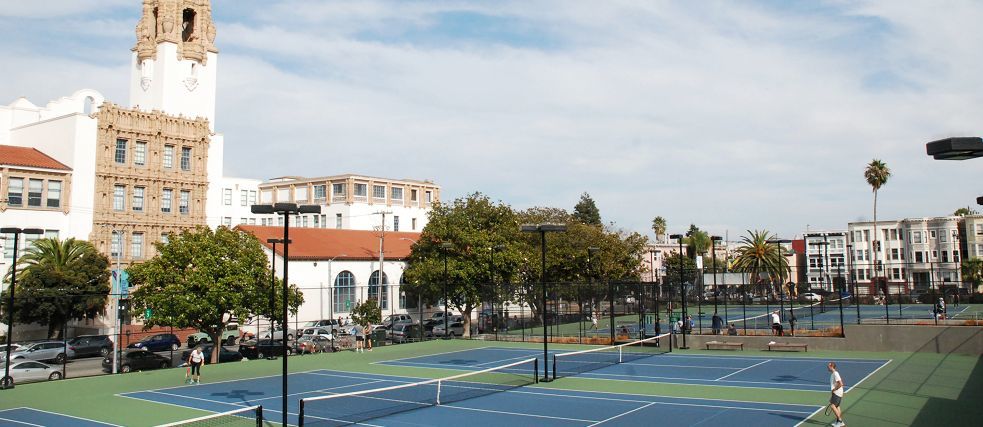 Anyone for tennis? Mission Dolores Park boasts no fewer than six courts. | © Julia Deshkin
Anyone for tennis? Mission Dolores Park boasts no fewer than six courts. | © Julia Deshkin
This is where locals meet for a round of tennis on one of the six courts, throw a few hoops with friends or kick a ball around on the football field. Families stage children’s birthdays on the big adventure playground or spread out their picnic blankets. Even dogs are expressly welcomed. Anyone preferring a bit more peace and quiet can withdraw to a shady spot under one of the mighty palm trees to read a book or get a bit of work done.
This is where locals meet for a round of tennis on one of the six courts, throw a few hoops with friends or kick a ball around on the football field.
Nowadays nobody would guess that the park served an entirely different purpose more than a century ago. In the mid-eighteenth century, urban planners would never have dreamed of “wasting” valuable building land for parks. What today is Dolores Park used to be a Jewish cemetery. When land within the city limits became more and more expensive, San Francisco’s bosses decided to relocate the cemeteries outside.
The cemetery was officially decommissioned in 1894, raising the question of what to do with the land. The obvious choice was to sell it off to property developers, but the Mission Park Association had other plans. Three years after the cemetery was closed, the Association launched a campaign: the 6.5 or so hectares of land were to be turned into a park “with an international character”. The proposal met with resistance from the authorities, however. The mayor considered the project unnecessary and believed it would pose too high a burden on the taxpayer, citing the fact that the city had only recently built the Golden Gate Park for recreational purposes. That was the last word on the subject – for the time being. The Association began a second offensive in 1903.
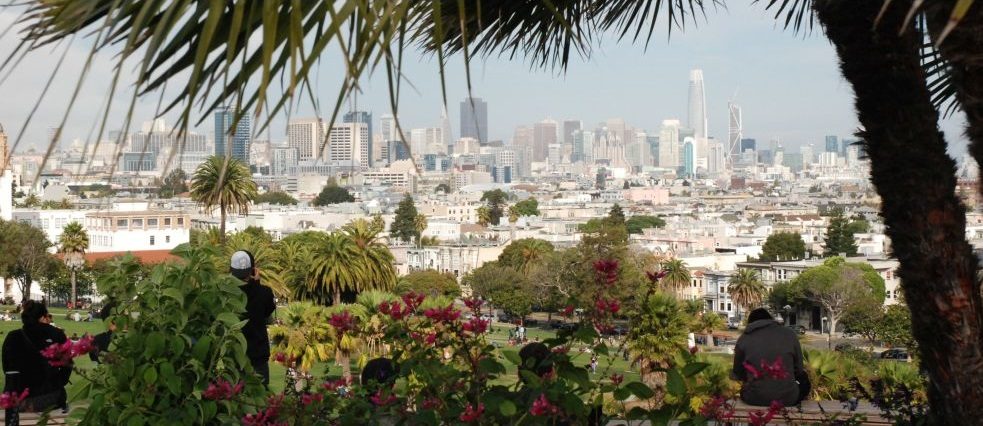 Children’s birthdays and picnics are a common sight in the park. | © Julia Deshkin
Children’s birthdays and picnics are a common sight in the park. | © Julia Deshkin
The city’s administration had to promise the cemetery’s owner, the Jewish Congregation Sherith Israel, that the land would remain “forever a place of beauty”.
Construction of the park got off to an inauspicious start, however. It coincided exactly with the most powerful earthquake in the city’s history. On 18 April 1906, San Francisco was hit by “The Big One”, measuring 7.8 on the Richter scale. Overnight, thousands of people found themselves homeless that April morning, while around 3,000 lost their lives. In this emergency situation, a camp for 1,600 families was set up in the park. It was not until two years later that the grounds were cleared and work on the original plans could resume.
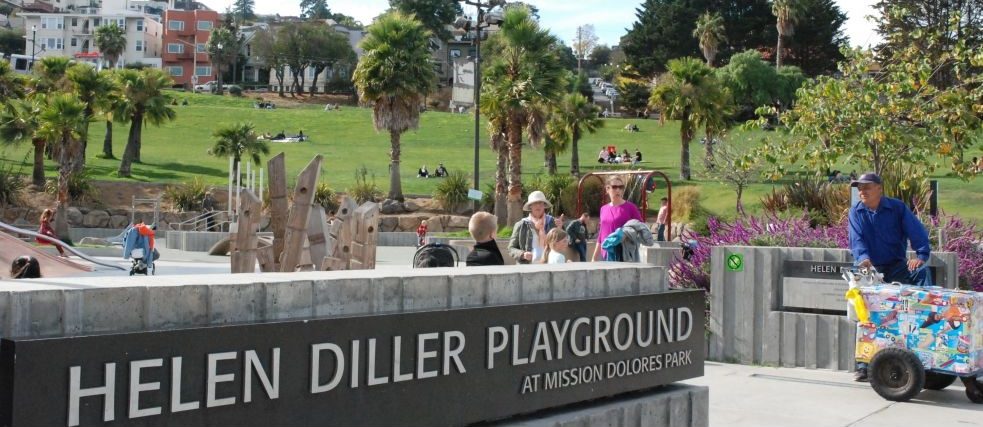 Helen Diller Playground at the heart of the park was only opened five years ago and is hugely popular with the park’s younger visitors. | © Julia Deshkin
Helen Diller Playground at the heart of the park was only opened five years ago and is hugely popular with the park’s younger visitors. | © Julia Deshkin
Today, the city can say with a clear conscience that it kept the promise that it made to the Jewish community back then: Mission Dolores Park is one of the most beautiful in San Francisco, not least thanks to the non-profit association Dolores Park Works. Its members make sure that the park remains attractive, safe, and above all clean. For nearly seven years, the association has been organizing regular clean-ups with volunteers, running campaigns and fund-raising.
Today, the city can say with a clear conscience that it kept the promise that it made to the Jewish community back then: Mission Dolores Park is one of the most beautiful in San Francisco.
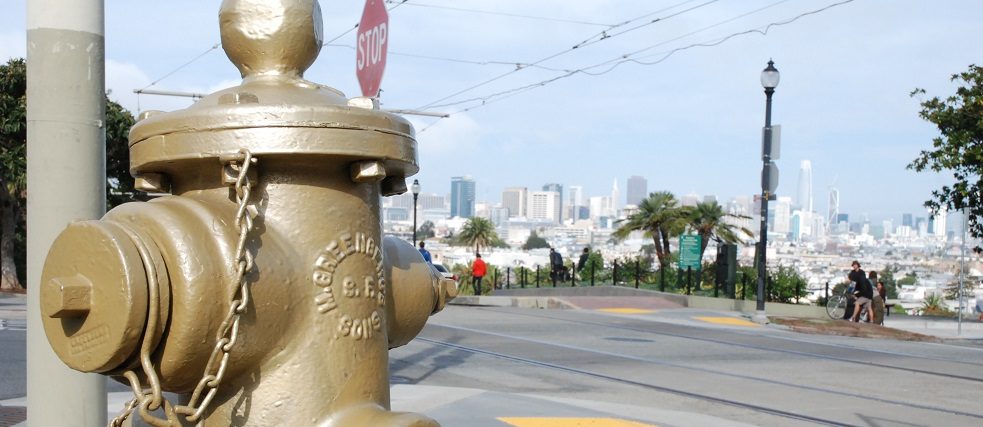 The silent hero of Mission District: the Golden Fire Hydrant. | © Julia Deshkin
The silent hero of Mission District: the Golden Fire Hydrant. | © Julia Deshkin